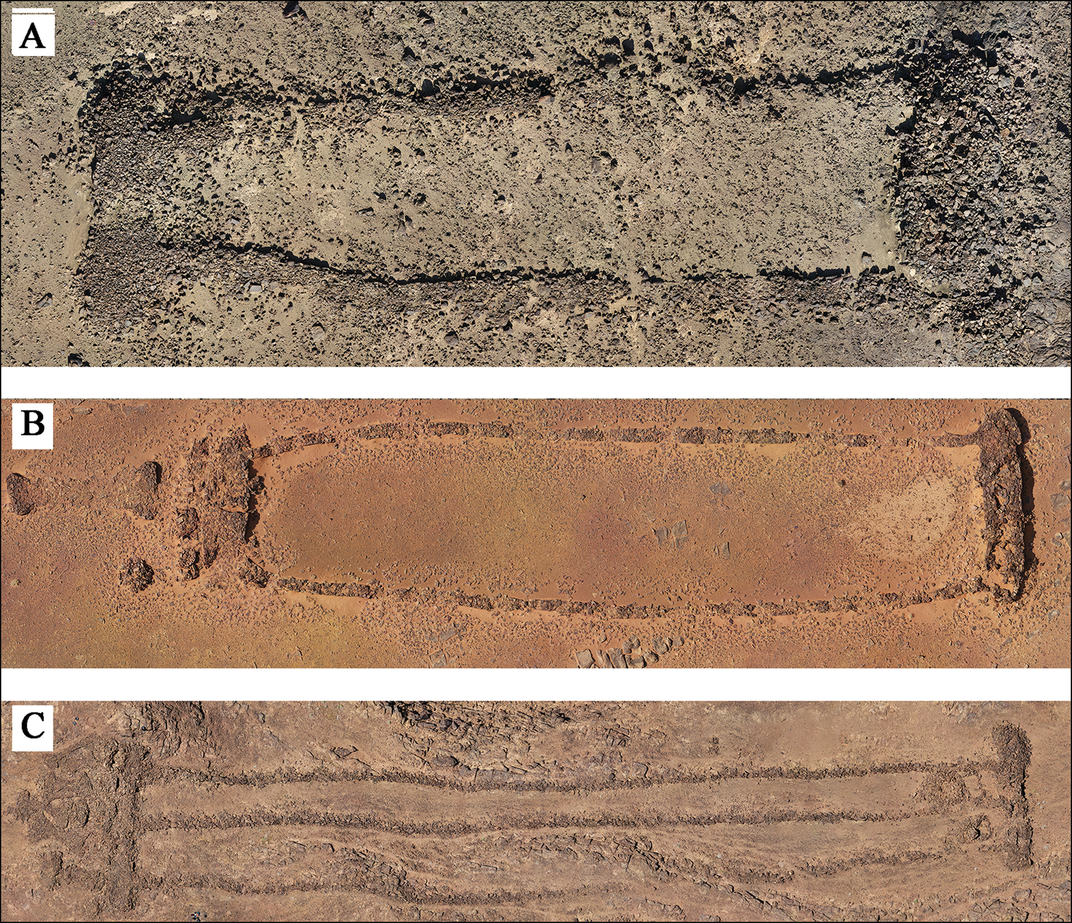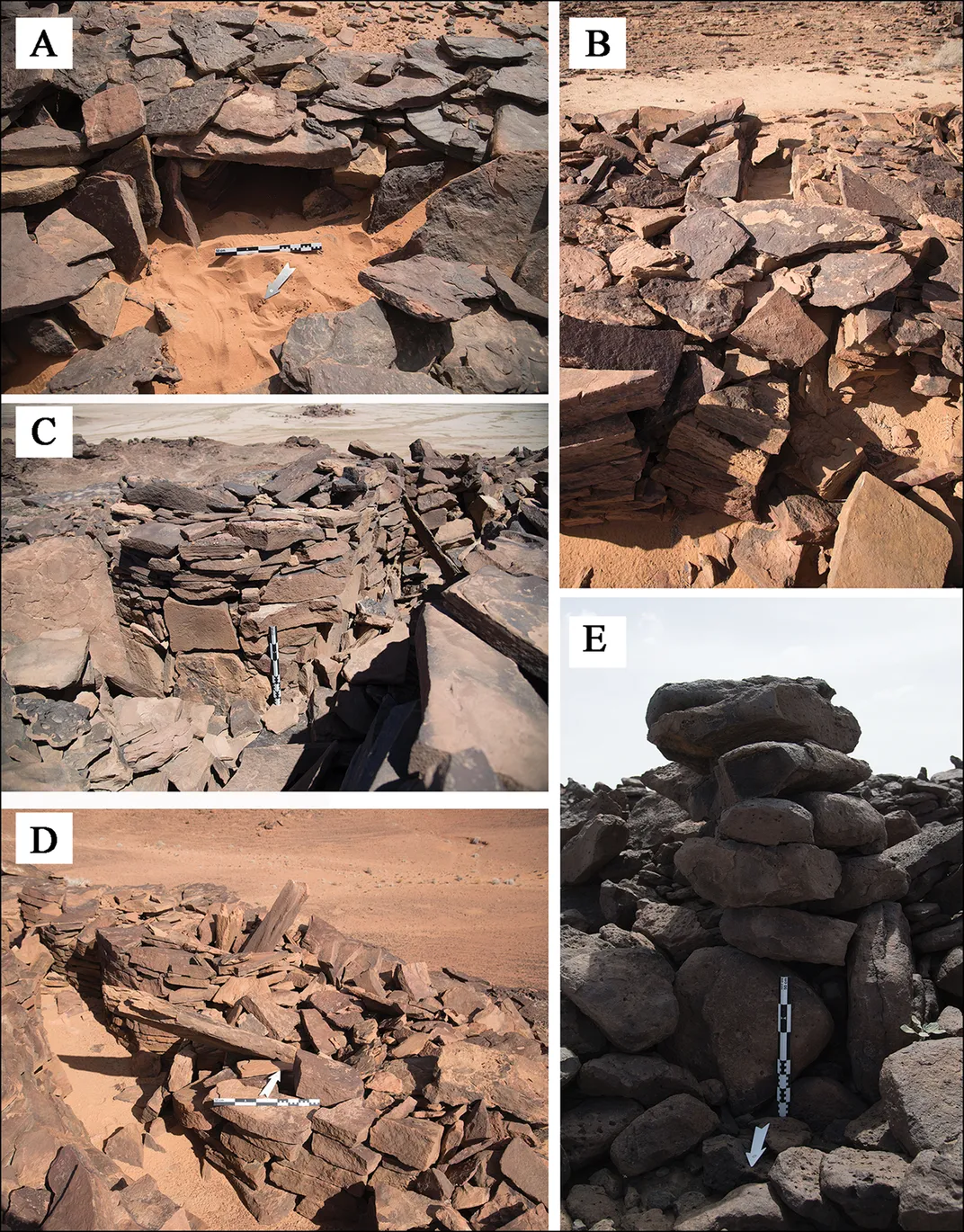Did a Neolithic Cattle Cult Build These Sprawling Structures in Saudi Arabia?
The roughly 7,000-year-old mustatils, or rectangular monuments, predate both Stonehenge and the Egyptian pyramids
:focal(1136x944:1137x945)/https://tf-cmsv2-smithsonianmag-media.s3.amazonaws.com/filer/91/78/91789dbb-bcbc-405e-b40c-474e16b368cd/urn_cambridgeorg_id_binary_20210424141923575-0671_s0003598x2100051x_s0003598x2100051x_fig1.png)
Thousands of monuments scattered across northwestern Saudi Arabia may represent the earliest known large-scale ritual sites in the world, predating Stonehenge by millennia.
First discovered in the 1970s, the more than 7,000-year-old rectangular structures, known as mustatils, have long been overlooked. Now, research published in the journal Antiquity offers new insights on the monuments, suggesting they may have been used by a widespread Neolithic cattle cult.
“We think people created these structures for ritual purposes in the Neolithic, which involved offering sacrifices of wild and domestic animals to an unknown deity/deities,” lead author Hugh Thomas, an archaeologist at the University of Western Australia, tells the Art Newspaper’s Garry Shaw. “Due to the monumental size of some of these buildings, this would have required considerable effort, so it is highly likely that larger communities or groups of people came together to build them. This suggests significant social organization and a common goal or belief.”
Thomas and his colleagues focused on a type of mustatil known as “gates.” (These open-air structures derive their name from their appearance, which resembles a fence gate when seen from above, per the study.) When the researchers searched for the monuments using satellite imaging and helicopters, they found more than 1,000 spread across 77,000 square miles—twice as many as previously thought to exist in the area, according to New Scientist’s Ibrahim Sawal. The team then conducted more research on the ground.

Made of sandstone blocks, the mustatils range in length from around 65 to 2,000 feet. Most feature a long courtyard with a “head” at one end, sometimes with distinct chambers, and one or more entrances at the other. As the Art Newspaper notes, many of these chambers contain standing stones.
Some mustatils have a dividing wall running down their side. In a number of instances, ancient humans used stones to block doorways between the courtyard and head, perhaps showing that the sites were no longer active.
“These thousands of mustatils really show the creation of a monumental landscape,” says Huw Groucutt, an archaeologist at the Max Planck Institute for the Science of Human History who was not involved in the study, to Tom Metcalfe of NBC News. “They show that this part of the world is far from the eternal empty desert that people often imagine, but rather somewhere that remarkable human cultural developments have taken place.”
Some observers had previously argued that mustatils functioned as pens or traps for animals, reports Ruth Schuster for Haaretz. But the new study shows that the walls, which stood about four feet tall, weren’t high enough to contain many animals.
Instead, evidence suggests that the structures hosted ritual activity. In the central chamber of one monument, the researchers found many cow bones, as well as the bones of sheep, goats and gazelles. Given the lack of evidence that people lived at the site, or disposed of the remains of meals there, the authors posit that the bones were probably part of ritual offerings. Radiocarbon analyis dated the bones to between 5300 and 5000 B.C., making them around 2,000 years older than Stonehenge or the earliest Egyptian pyramids.

“You don’t get a full understanding of the scale of the structures until you’re there,” Thomas tells New Scientist.
The researchers note that cattle played a key role in the lives of pastoral residents of the region, which was much more fertile 7,000 years ago than it is today. Previous studies have documented rock art with scenes of cattle herding in the area. Scholars have also identified cattle cults in the southern Arabian Peninsula, though the paper notes that the mustatils in northwestern Saudi Arabia predate these groups by 900 years.
The mustatils would have been prominent features in the Neolithic landscape. Their builders often constructed them on hills with the heads at the highest point. Many were located close to platform structures shaped like the letter “I,” which may have played a role in their ritual use, reports Haaretz.
“What excites me most about these structures is their size and widespread distribution, and the fact that they are almost identical in terms of form,” co-author Melissa A. Kennedy, also an archaeologist at the University of Western Australia, tells the Art Newspaper. “This suggests a common religious belief may have been held over a huge part of northwest Arabia during the Late Neolithic, a feature that is so far unparalleled anywhere in the world.”
/https://tf-cmsv2-smithsonianmag-media.s3.amazonaws.com/accounts/headshot/Livia_lg_thumbnail.png)
/https://tf-cmsv2-smithsonianmag-media.s3.amazonaws.com/accounts/headshot/Livia_lg_thumbnail.png)